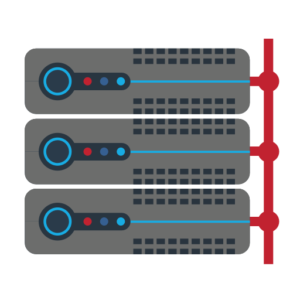Over the last five years, there has been a constant push to move infrastructure to the Cloud, which accelerated further during the pandemic. It is becoming clear that for a proportion of organisations, the Cloud is not always the best route and that an on-premise (also known as on-prem, on-premises) or a hybrid model is most beneficial.
On-premise relates to where IT infrastructure is located; this can be physically in a building, usually in a server room. This blog looks at why organisations are choosing to stay on-premise and what the benefits of staying on-premise are.
The same is true for automation; on-premise automation remains an organisation’s key focus. In 2018 Kelverion saw significant interest from customers investigating a move to Microsoft’s Azure Automation as a Cloud alternative to System Center Orchestrator, the on-premise automation engine from Microsoft, as the last System Center Orchestrator release was expected to be 2016.
Background of on-premise automation
Twelve months later, customers and partners were surprised to learn about the SCO 2019 release, subsequently putting migration discussions on hold to learn how Microsoft would deliver System Center’s future.
Fast-forward a few years, and Microsoft has now provided major updates to modernise the platform with the launch of System Center Orchestrator 2022. Undoubtedly, the option of on-premise automation is not going away anytime soon.
Organisations have continued to use and operate earlier versions (2012, 2016 and 2019) of Orchestrator with a range of Integration Packs from a host of sources, including Microsoft, vendor-developed, community and, of course, Kelverion.
On-premise automation today
At Kelverion, we have seen increased interest and purchases for our Microsoft System Center Orchestrator integrations. The release for System Center 2022 with substantial changes meant straightforward upgrades available previously are not possible with this release as all Integration Packs need to be updated to support Orchestrator 2022.
Now, a year on from the System Center 2022 release, organisations are starting to upgrade in increasing numbers continuing to remain on-premise for all or part of IT automation use cases.
With Cloud-based options available, why is on-premise automation still attractive?
Perceived costs of the Cloud
The benefits of moving to the Cloud or ‘as a service’ solutions are many, however, they come at a cost and businesses have become wary of moving without a full understanding of uncapped or uncertain costs. Even though services such as Azure Automation have very low charges per minute, the costs are uncapped, and companies don’t have the cost certainty of on-premise automation. The costs are 0.02 pence or cents per execution minute. To give this some context; even if an automation iss continually executed in Azure Automation every minute, of every day, for a whole month, it would cost £90.
Control of process execution with on-premise automation
With on-premise infrastructure, users are in full control. IT teams can design specific automation execution. Whereas in the Cloud, there may be a short delay, and users are have less control of the process execution unless hybrid workers are deployed.
Existing datacentre infrastructure
Where organisations already have infrastructure on-premise, it is seen as easier to maintain that environment, which can create inertia. There is often resistance to change and limited resources to manage a project of this size. The old adage of ‘if it ain’t broke, don’t fix it’ rings true in this case.
Need or desire to keep data on-premise
The data security provided by Cloud vendors is very high and frequently just as high than that provided on-premise; however, on-premise means total control on how and where data is physically stored and secured. Some sectors still mandate data is not to be stored or processed off-premise making a critical business case for remaining on-site.
Existing skills
Moving to the Cloud does require knowledge and understanding of how services are delivered. Although some skills are similar and there are synergies between the two, there will be a training requirement to upskill for a move to the Cloud. Existing skill sets are a rationale for maintaining the status quo of on-premise automation.
A large number of runbooks developed and operating successfully on site
Suppose an organisation has invested in Orchestrator since 2010, back when the capability became part of the System Center suite. In that case, there will have been years of process design and build that has resulted in hundreds of runbooks running key processes. Many IT professionals question why a change should be prioritised and invest in moving to a new delivery model, With Microsoft now committing to extend support to Orchestrator until 2032, plus the new platform enhancements such as 64-bit PowerShell compatibility.
Migration to System Center Orchestrator 2022
With the considerable implications of upgrading to SCO 2022, there is a question as to whether the effort would be better placed into transitioning to Azure Automation, as the closest alternative.
Where Orchestrator 2019 and its predecessors were 32-bit applications, Orchestrator 2022 is a native 64-bit application. SCO 2022 is compatible with the modern 64-bit versions of Windows Server. However, it does cause challenges for businesses looking to migrate from older versions, given the implications to Integration Packs and PowerShell scripts.
If you’re considering staying on-premise with Orchestrator, check out Kelverion’s System Center Orchestrator Best Practices Guide. This includes many tips on creating runbooks and has recently been updated to include migration considerations for Orchestrator 2022.
About Kelverion
Experts in Cloud, On-Premise and Hybrid automation, Kelverion provide solutions and integrations that remove the manual process tying up IT staff; transforming the productivity, efficiency, and supportability of IT service automation. Our products utilize and enhance the power of Microsoft Azure and System Center Orchestrator.
Working closely alongside Microsoft we have developed our integrations and automation solutions to help bridge the gap between Microsoft’s automation platforms and third-party systems, in the process building key alliance partnerships with multiple vendors to ensure our products are fully certified.
Since 2010, Kelverion has expanded to become a global company, with offices now in the UK, Canada, and the US. Through this, we are able to offer and support products and professional services engagements to enterprise-level organizations no matter where they are.
For more information, to arrange a discovery call or to see a demonstration please contact our helpful team today via info@kelverion.com.





